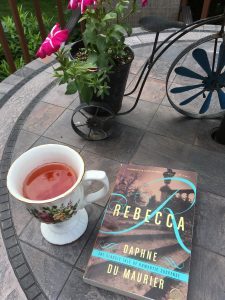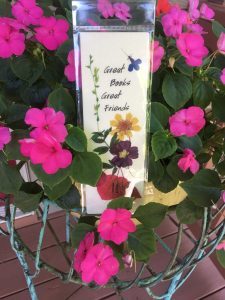Dreaming Again of Manderley

English Berries and Cream tea and one of my favorite mysteries
“Last night I dreamt I went to Manderley again.” I could have uttered the best-loved first line myself. Though it’d been years since I read the novel, I instantly remembered. Manderley. How could I ever forget?
I returned to Rebecca for its strong sense of place. I, like the novel’s characters, am enchanted with the setting. The blood-red rhododendrons, the dark woods, the restless sea—they are as real to me as my own wooden fence. Never mind I haven’t been to Cornwall, the place Daphne du Maurier imagined as she wrote the novel (“Author’s Note”). I’ve been to Manderley, and that’s even better.
Du Maurier depicts the ancestral home using traditional gothic qualities: “a carefully described landscape and setting, a sense of the uncanny, and the impression that events are out of kilter with the rational world” (Buzwell). How readers suffer like our unnamed narrator, wanting to know the west wing’s forbidden secrets. We have the east wing and the rose garden, sure, but the large room in the west wing—the one that faces the sea—we long to fling open the window, tear away the coverings, and expose its mysterious past.
For a while, we settle for the library and tea, the dog Jasper at our feet. (It’s certainly better than old Mrs. Van Hopper and her bridge games.) Life at Manderley is good, or is it? Our curiosity must be satiated, so on we go. When the narrator finds herself in the west wing, the “mist upon the window-glass, as though someone had breathed upon it,” fear seizes us. This is Rebecca’s room; it’s herbreath upon the window. Must she take not only the book’s title but our dear Manderley too?

Isn’t this bookmark fun? It uses pressed flowers.
Although she never appears as a ghost, Rebecca dominates the novel, haunting much more than rooms. She lives in the minds of the characters, even our narrator’s, though the two never met. First we envy Rebecca; she must have been something very special. Then we start wondering about those rhododendrons. We wander through Happy Valley—down to the cove, the cottage—picking up clues like a child picks dandelions, mistaking weeds for flowers. By the end, we sense Rebecca laughing at us, “God how funny … how supremely, wonderfully funny.”
It’s hard to move on after a book like Rebecca. We pick up another novel, thumb a few pages, and set it down. We don’t want to leave, but when we do, we won’t leave empty handed. Novels with strong settings give us so much more than a story. They give us a place to return to. For us book gypsies, there’s nothing better. Like a traveler, we will always have our snapshots, our mementos, our memories of Manderley.
What books do you go back to, readers? Any special books you reread? How about books with strong settings? Please share for a chance to win a package of English Berries and Cream from Plum Deluxe, the tea featured in the picture, and the pressed flowers bookmark.
“Author’s Note” Rebecca. Daphne du Maurier. 1938.
Buzwell, Greg. “Daphne du Maurier and the Gothic Tradition.” British Library.



